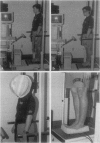Abstract
Objective:
Athletic trainers and team physicians are often faced with the dilemma of when to return athletes to participation following mild head injury. Unfortunately, clinicians rarely have quantitative information on which to base their decisions. The purpose of this investigation was to identify postural stability changes in athletes with acute mild head injury.
Design and Setting:
High school and college male athletes were prescreened for postural stability before the start of their season. Subjects suffering injury during the season returned for testing on days 1, 3, 5, and 10 following injury, and 1 month postseason. Control subjects were selected for comparisons.
Subjects:
Ten prescreened subjects (age = 17.4 ± 2.2 yr; ht = 183.8 + 8.1 cm; wt = 87.7 + 17.3 kg) returned for testing following an injury. Ten matched control subjects (age = 18.6 ± 2.6 yr; ht = 185.7 ± 6.7 cm; wt = 84.5 ± 19.5 kg) were selected for comparisons. Additionally, nine subjects (eight male and one female) (age = 19.9 ± 4.2 yr; ht = 182.3 + 10.9 cm; wt = 89.6 ± 25.2 kg) who had sustained a mild head injury from other varsity sports teams were recruited. Nine matched controls (age = 22.1 ± 3.3 yr; ht = 181.0 ± 9.9 cm; wt = 84.9 ± 25.6 kg) were again utilized.
Measurements:
Sway index and center of balance were measured using the Chattecx Balance System during three eye conditions and three surface conditions for all subjects.
Results:
Repeated measures analyses of variance (ANOVA) for each prescreened subject's sway index revealed significant differences between injured subjects and control subjects on day 1 postinjury as compared with the prescreening and/or subsequent tests. The analysis for sway index and center of balance inclusive of all 19 subjects with mild head injury and all 19 control subjects demonstrated increased postural sway compared with control subjects on day 1 postinjury during all plafform conditions, and on day 3 during the foam platform condition. The analysis for center of balance using the same subjects revealed that injured subjects maintained their center of balance farther away on day 1 postinjury compared with subsequent tests (p < .05).
Conclusions:
These findings suggest that computerized dynamic posturography is a useful tool in objectively assessing postural stability in subjects with mild head injuries. Subjects with mild head injury appear to demonstrate impaired postural stability 1 to 3 days following injury. This information should aid clinicians in determining when an athlete can safely return to participation.
Keywords: concussion, balance, postural sway
Full text
PDF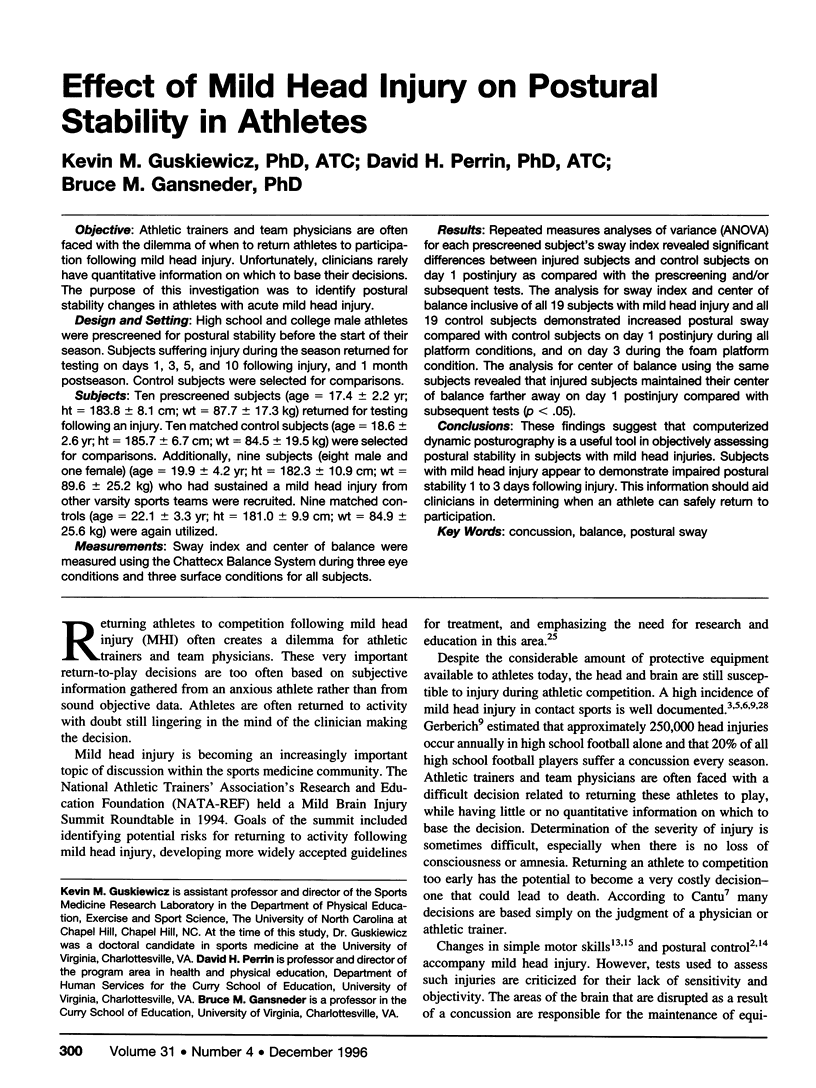
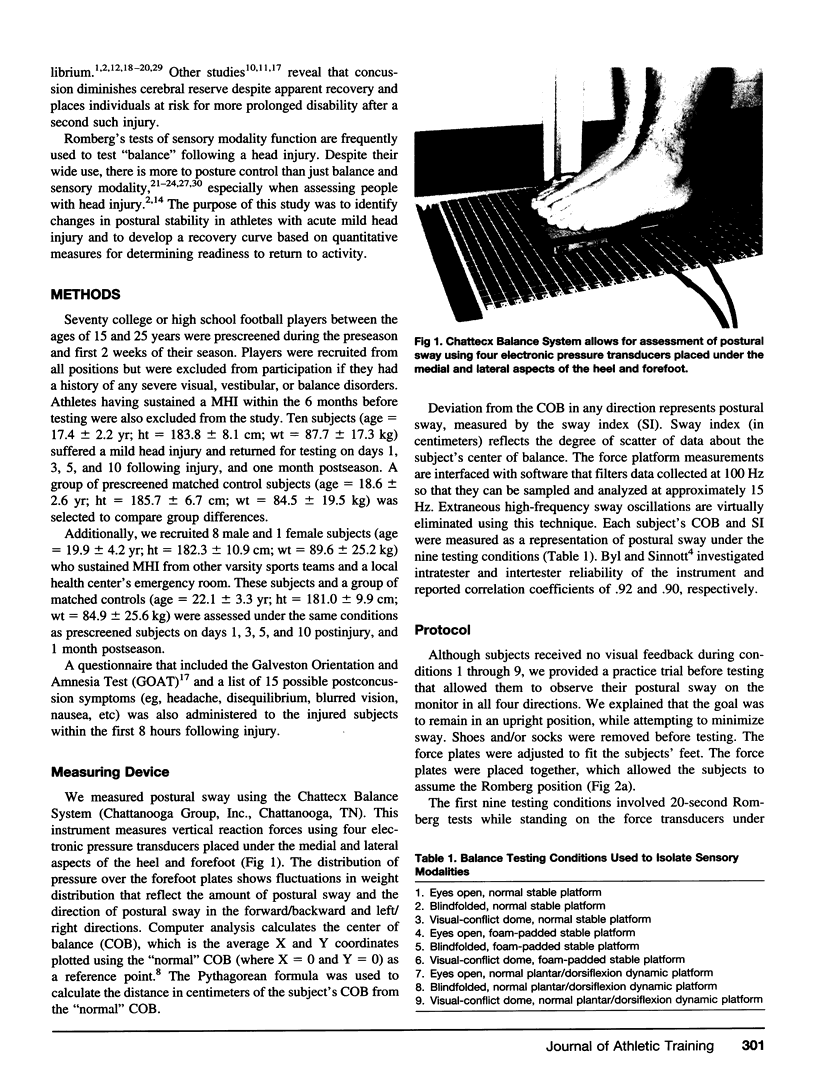
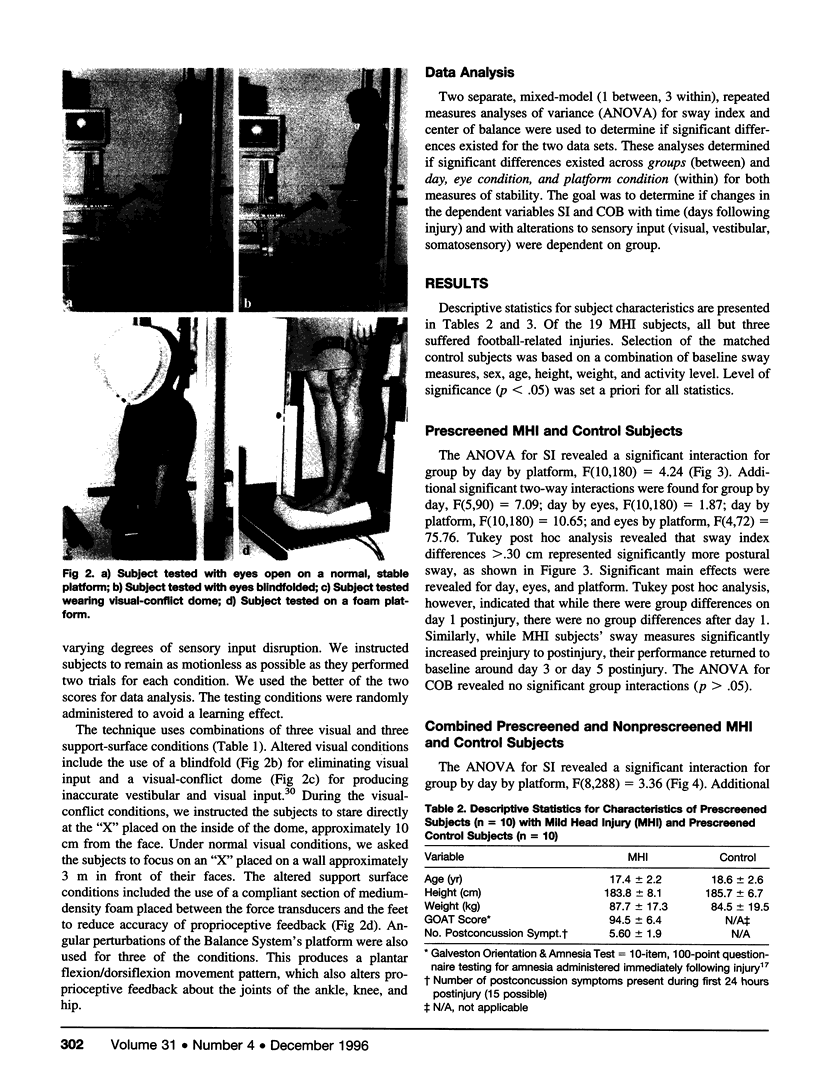
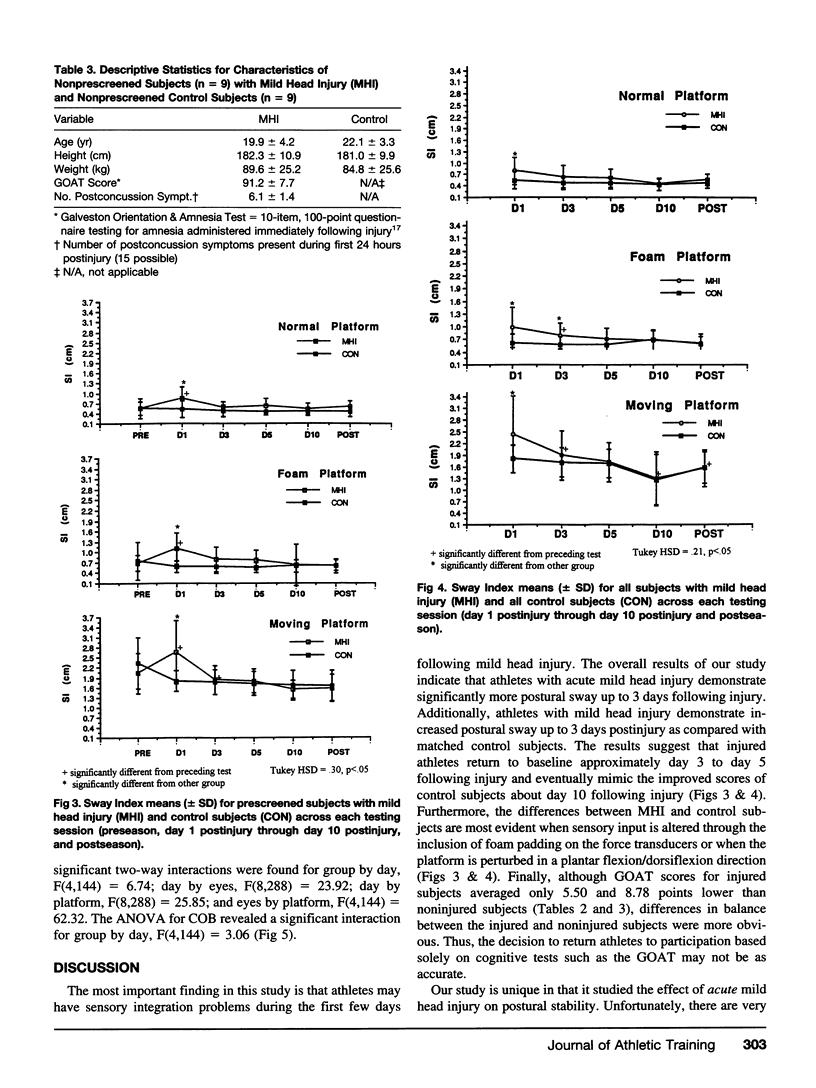
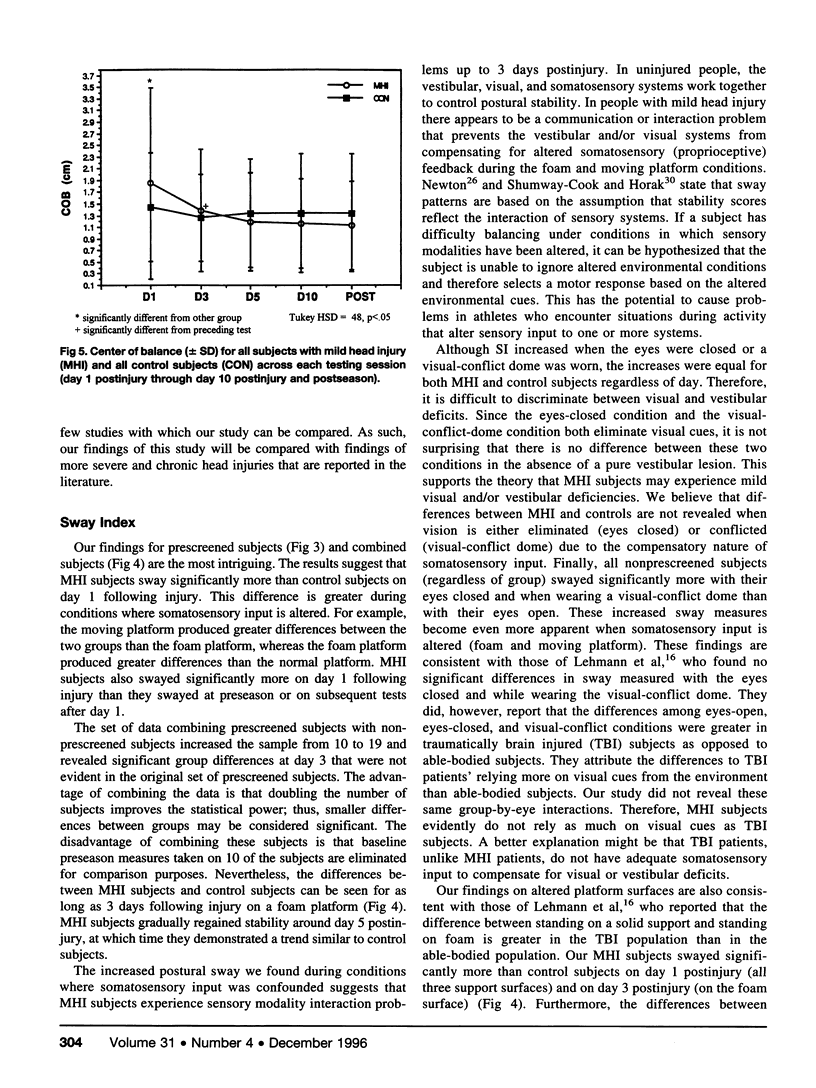
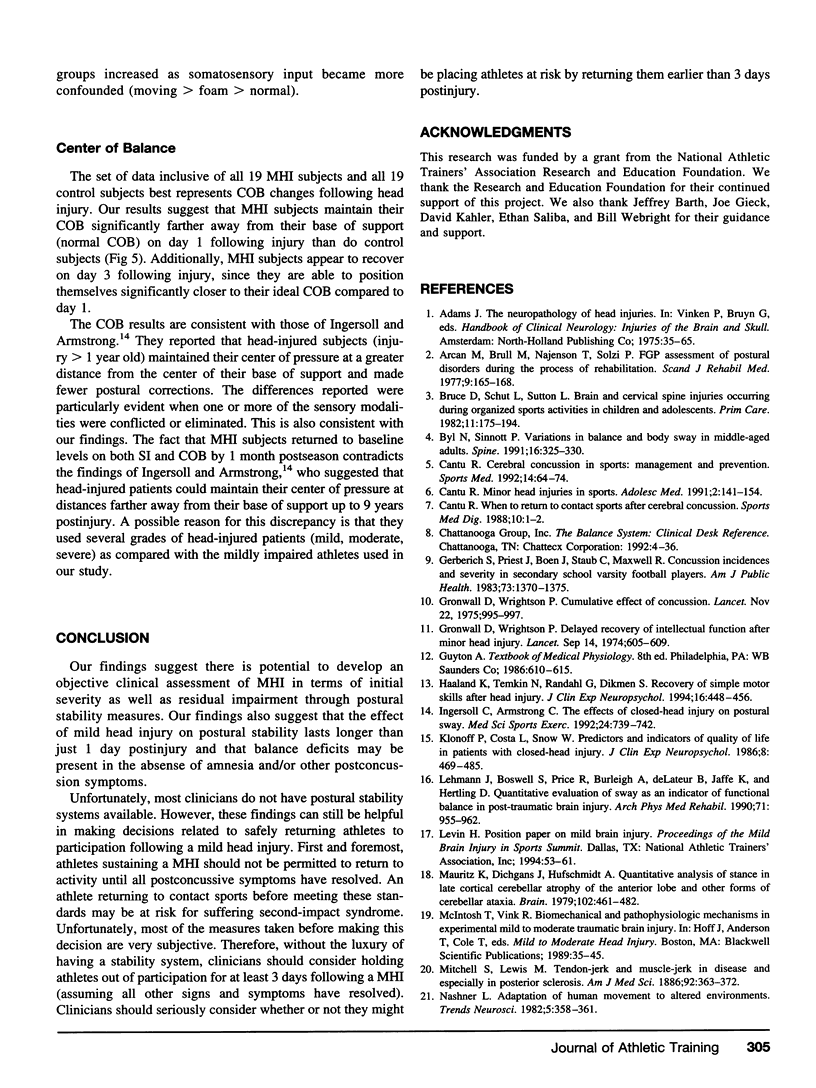
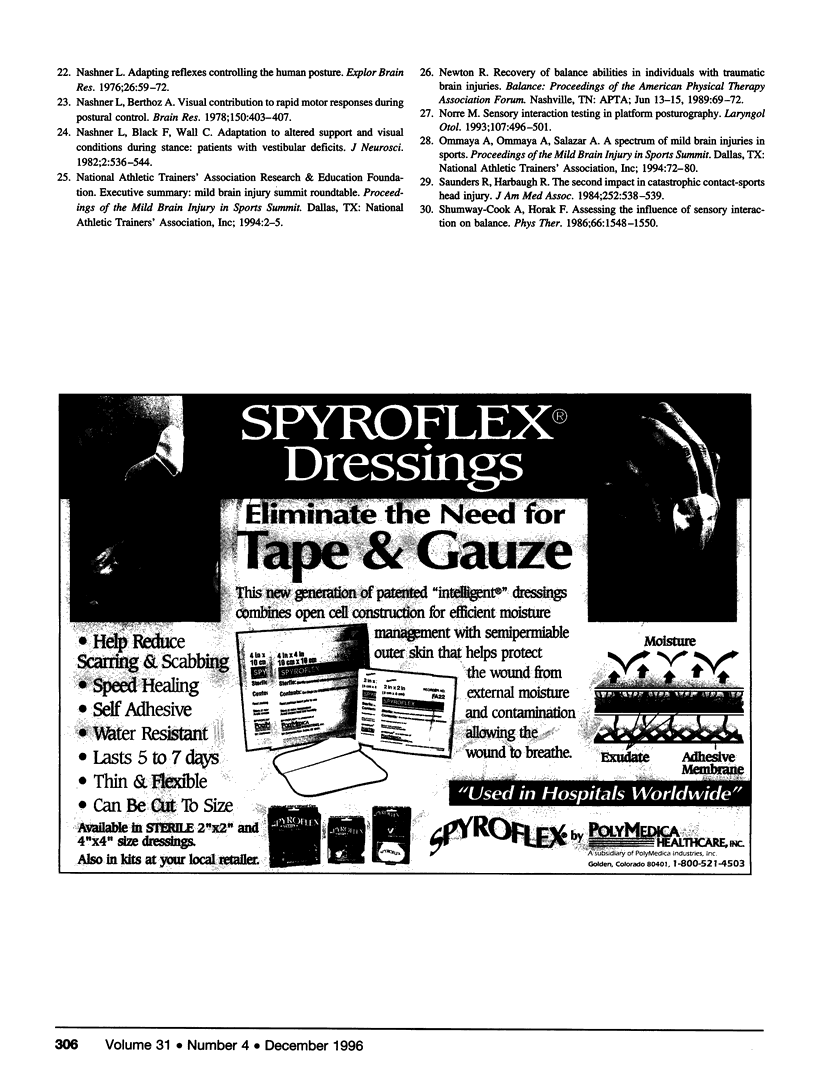
Images in this article
Selected References
These references are in PubMed. This may not be the complete list of references from this article.
- Arcan M., Brull M. A., Najenson T., Solzi P. FGP assessment of postural disorders during the process of rehabilitation. Scand J Rehabil Med. 1977;9(4):165–168. [PubMed] [Google Scholar]
- Bruce D. A., Schut L., Sutton L. N. Brain and cervical spine injuries occurring during organized sports activities in children and adolescents. Prim Care. 1984 Mar;11(1):175–194. [PubMed] [Google Scholar]
- Cantu R. C. Cerebral concussion in sport. Management and prevention. Sports Med. 1992 Jul;14(1):64–74. doi: 10.2165/00007256-199214010-00005. [DOI] [PubMed] [Google Scholar]
- Cantu RC. Minor Head Injuries in Sports. Adolesc Med. 1991 Feb;2(1):141–154. [PubMed] [Google Scholar]
- Gerberich S. G., Priest J. D., Boen J. R., Straub C. P., Maxwell R. E. Concussion incidences and severity in secondary school varsity football players. Am J Public Health. 1983 Dec;73(12):1370–1375. doi: 10.2105/ajph.73.12.1370. [DOI] [PMC free article] [PubMed] [Google Scholar]
- Gronwall D., Wrightson P. Cumulative effect of concussion. Lancet. 1975 Nov 22;2(7943):995–997. doi: 10.1016/s0140-6736(75)90288-3. [DOI] [PubMed] [Google Scholar]
- Gronwall D., Wrightson P. Delayed recovery of intellectual function after minor head injury. Lancet. 1974 Sep 14;2(7881):605–609. doi: 10.1016/s0140-6736(74)91939-4. [DOI] [PubMed] [Google Scholar]
- Haaland K. Y., Temkin N., Randahl G., Dikmen S. Recovery of simple motor skills after head injury. J Clin Exp Neuropsychol. 1994 Jun;16(3):448–456. doi: 10.1080/01688639408402655. [DOI] [PubMed] [Google Scholar]
- Ingersoll C. D., Armstrong C. W. The effects of closed-head injury on postural sway. Med Sci Sports Exerc. 1992 Jul;24(7):739–743. [PubMed] [Google Scholar]
- Klonoff P. S., Costa L. D., Snow W. G. Predictors and indicators of quality of life in patients with closed-head injury. J Clin Exp Neuropsychol. 1986 Oct;8(5):469–485. doi: 10.1080/01688638608405171. [DOI] [PubMed] [Google Scholar]
- Lehmann J. F., Boswell S., Price R., Burleigh A., deLateur B. J., Jaffe K. M., Hertling D. Quantitative evaluation of sway as an indicator of functional balance in post-traumatic brain injury. Arch Phys Med Rehabil. 1990 Nov;71(12):955–962. [PubMed] [Google Scholar]
- Mauritz K. H., Dichgans J., Hufschmidt A. Quantitative analysis of stance in late cortical cerebellar atrophy of the anterior lobe and other forms of cerebellar ataxia. Brain. 1979 Sep;102(3):461–482. doi: 10.1093/brain/102.3.461. [DOI] [PubMed] [Google Scholar]
- Nashner L. M. Adapting reflexes controlling the human posture. Exp Brain Res. 1976 Aug 27;26(1):59–72. doi: 10.1007/BF00235249. [DOI] [PubMed] [Google Scholar]
- Nashner L. M., Black F. O., Wall C., 3rd Adaptation to altered support and visual conditions during stance: patients with vestibular deficits. J Neurosci. 1982 May;2(5):536–544. doi: 10.1523/JNEUROSCI.02-05-00536.1982. [DOI] [PMC free article] [PubMed] [Google Scholar]
- Nashner L., Berthoz A. Visual contribution to rapid motor responses during postural control. Brain Res. 1978 Jul 14;150(2):403–407. doi: 10.1016/0006-8993(78)90291-3. [DOI] [PubMed] [Google Scholar]
- Nies N., Sinnott P. L. Variations in balance and body sway in middle-aged adults. Subjects with healthy backs compared with subjects with low-back dysfunction. Spine (Phila Pa 1976) 1991 Mar;16(3):325–330. doi: 10.1097/00007632-199103000-00012. [DOI] [PubMed] [Google Scholar]
- Saunders R. L., Harbaugh R. E. The second impact in catastrophic contact-sports head trauma. JAMA. 1984 Jul 27;252(4):538–539. [PubMed] [Google Scholar]
- Shumway-Cook A., Horak F. B. Assessing the influence of sensory interaction of balance. Suggestion from the field. Phys Ther. 1986 Oct;66(10):1548–1550. doi: 10.1093/ptj/66.10.1548. [DOI] [PubMed] [Google Scholar]




